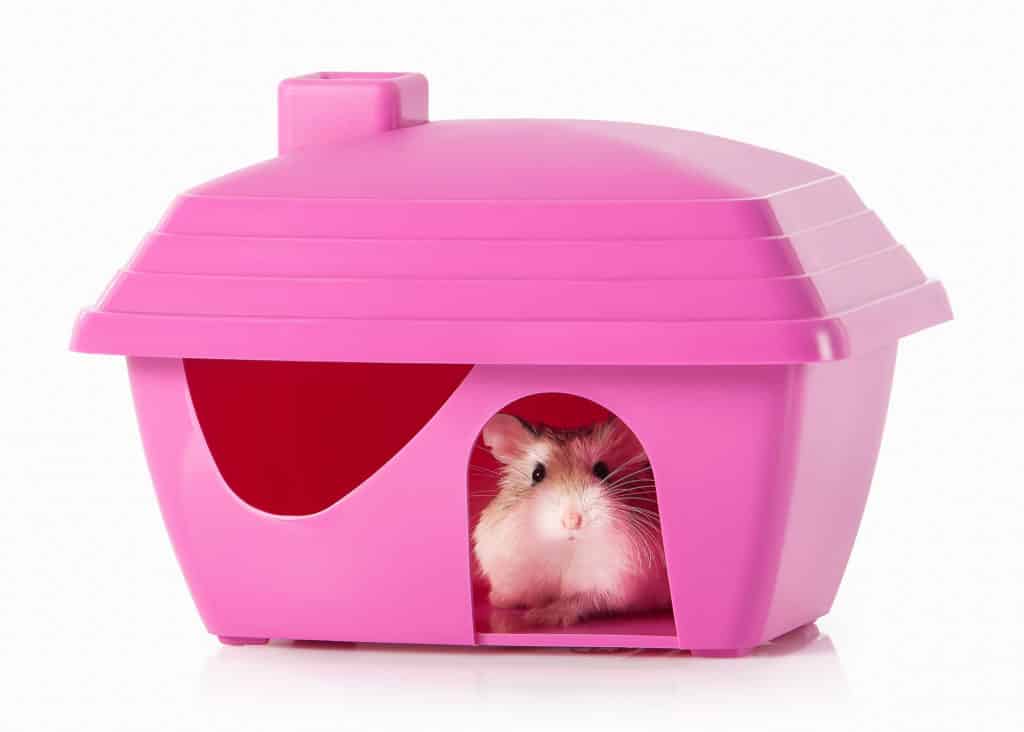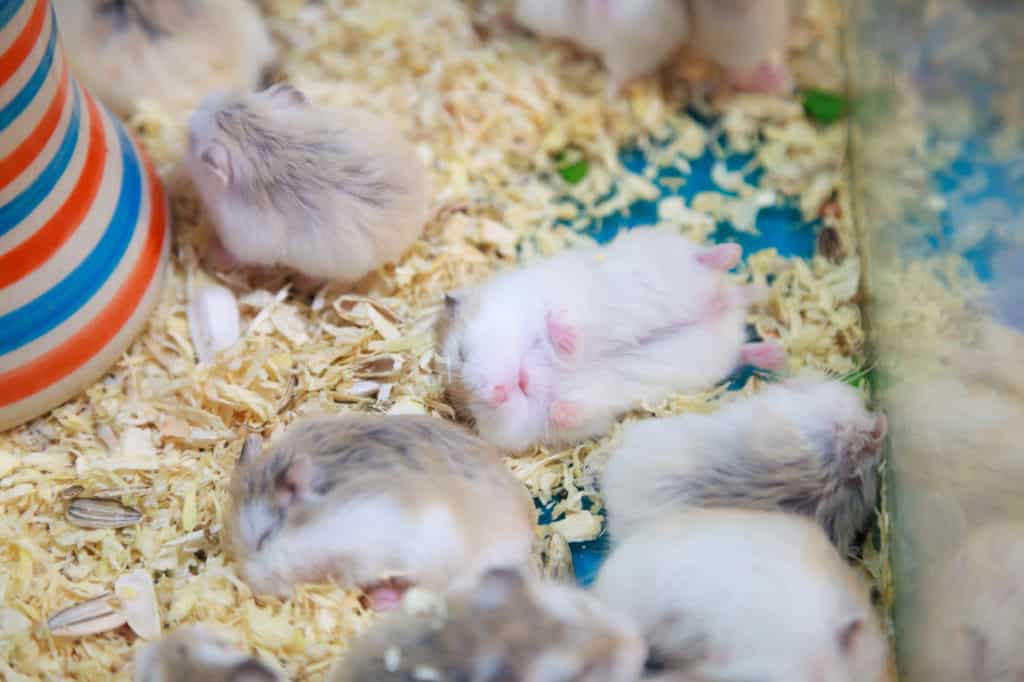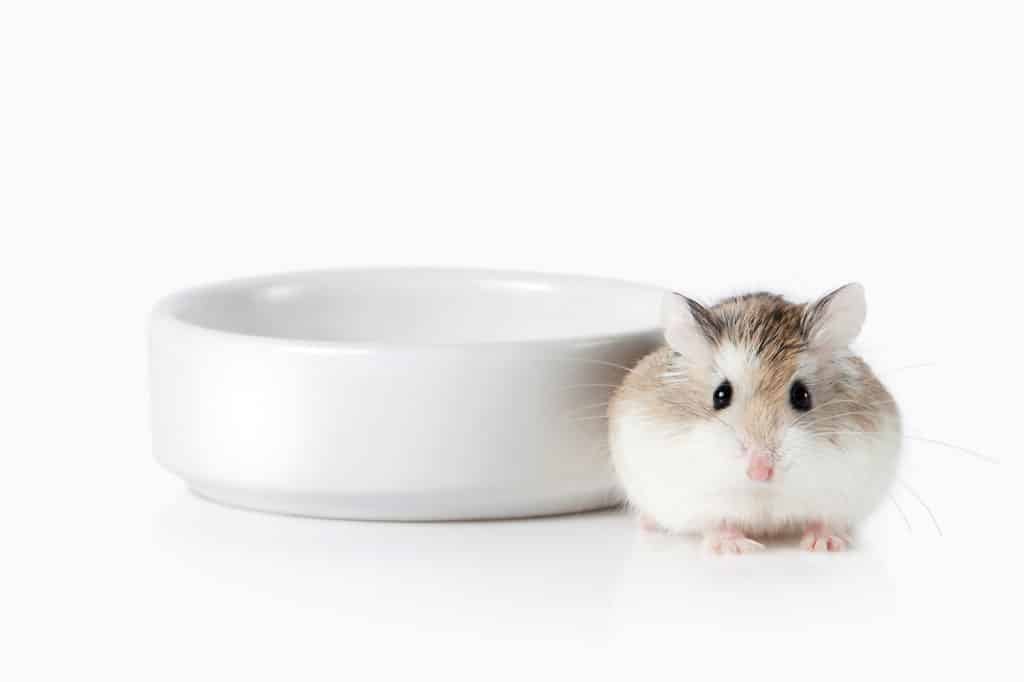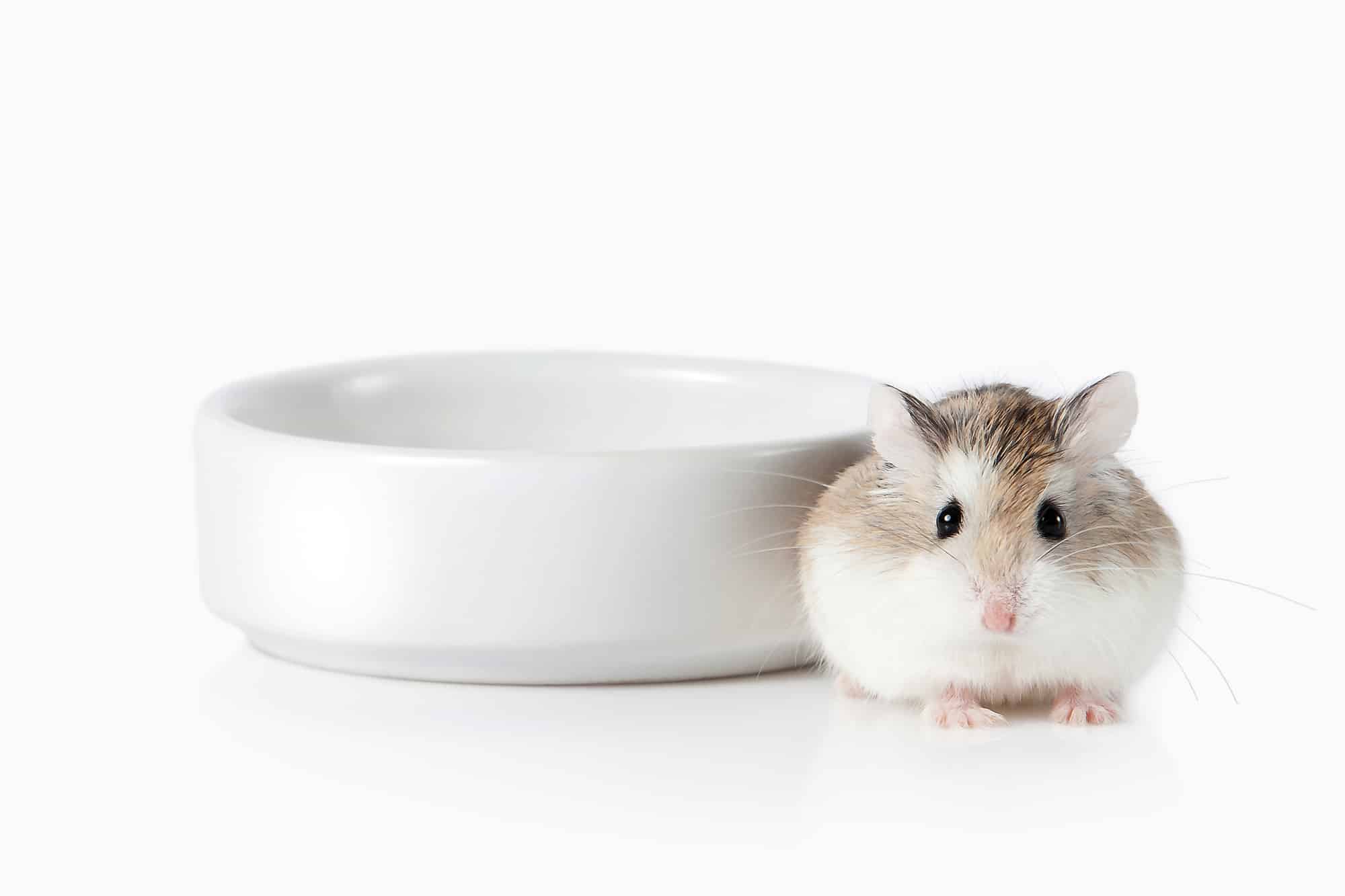When we talk about hamsters, the picture that comes to many people’s minds is that of the Syrian hamster. But there are also other species of hamsters. Indeed, there are 19 species of hamsters. Of these, 5 are kept as pets, and the Syrian hamster is just one of these species. The rest are all dwarf hamsters, which are considerably smaller in size.
This blog post is about one such species of hamster – The Roborovski hamster (Species name: Scientific Name: Phodopus Roborovskii). The Roborovski hamster is also known as Robo hamster, desert hamster, and Robo dwarf hamster.
In this blog post, you will find out everything you need to know about Roborovski hamsters, including their appearance, behavior, and sleeping habits. You will also find out what foods to give to your Roborovski hamster, what to do to keep him healthy and happy, and how to ensure his safety.
How do Roborovski hamsters look?
Size
Roborovski hamsters are the smallest species of hamsters. Even according to the standards of dwarf hamsters, they are tiny creatures. An adult Roborovski hamster is just 1.8″ to 2″ in length and weighs 0.71 to 0.88 ounces.
But despite their small size, Roborovski hamsters are the fastest among all dwarf hamsters. They can run 6 miles in a single night.
Colors
In the wild, Roborovski hamsters are golden brown in color, even though their nose, stomach, legs, and tail are white.
In captivity, ten more colors of Roborovski hamsters have become available due to breeding (Source: Wikipedia). You may be able to find some of these colors in the pet shop near your house. These ten colors are:
- Agouti – Greyish brown hamster with white fur on its stomach
- White-face – Agouti with a white face
- Husky – Light-colored hamster with a white face
- Mottled – White-colored hamster with Agouti or Husky colors appearing in irregular patches across its body and head
- Head spot – Pure white hamster with a patch of another color on its head
- Dark-eyed White – White hamster with a grey coat on its stomach and ears
- Pure White – White hamster
- Red-eyed – Cinnamon-colored hamster with chocolate-colored fur on its belly and dark red eyes
- Black/Blue
- Black-eyed White
Features
Roborovski hamsters are smaller than most other hamsters. They lack the dorsal stripe found in many other species of hamsters. They also have white spots above their eyes that look like eyebrows.
But like other hamster species, they, too, have cheek pouches. They use their cheek pouches to store the food they find and transport it back to their burrows.
Sometimes, female hamsters can also use their cheek pouches to carry their young if they sense danger nearby.
Even though cheek pouches are highly beneficial for Roborovski hamsters, they may also restrict the movement of Roborovski hamsters and slow them down if they are overloaded.
How did the Roborovski hamster become a famous pet?

Unlike dogs, cats, and rats, hamsters are not animals that have been known to humans for millennia. They became known to humans just a few centuries back. And only in the last century did we succeed in domesticating them.
Roborovski hamsters, specifically, were discovered in 1894 by a Russian explorer called Lt. Vsevolod Roborovski. So, to honor him, these little creatures were named after him. A decade later, a Russian zoologist called Konstantin Alekseevich Satunin started studying them. Thanks to these people, Roborovski hamsters became known to the world.
In the 1960s, the London Zoo imported these little animals into the UK. However, the Britishers couldn’t succeed in breeding Roborovski hamsters. But several European countries had already found success in this area. So, a fresh batch of Robo hamsters was imported from the Netherlands in 1990. This time, the Britishers succeeded in breeding them and exported these little creatures to the USA in 1998.
Behavior
Social behavior
Like other dwarf hamsters, Roborovski hamsters are also social creatures. So, they can be housed in pairs or even in small groups. But the rules for other dwarf hamsters apply to Roborovski hamsters as well. You should introduce them when they are little and keep an eye on them to make sure that they don’t fight against each other. Moreover, it’s better if the individuals are from the same litter.
But Roborovski hamsters are not just social with their own kind. They are social with humans as well. They can become friendly with you once you tame them.
Roborovskis don’t generally bite humans. But they can wriggle when they are held. Due to their small size and wriggling behavior, they may fall down from your hand and hurt themselves. So, it is better to just watch them than to handle them (Source: National Hamster Council, UK).
But if you really want to hold them, you should first pick them up and hold them inside their cage. That way, even if they fall down, they will fall inside their cage and won’t fall a long way down.
Once they start trusting you, you can hold them outside their cage as well. However, they are definitely not suitable for children and first-time pet owners.
Diet
Roborovski hamsters are found in the deserts and semi-deserts of Kazakhstan, Mongolia, and China, where water is scarce. So, their bodies have evolved to conserve water. Their kidneys are very efficient and produce little urine. But since their bodies have adapted to food items with little water content, eating food items with a lot of water content can give them diarrhea. Therefore, you shouldn’t give them too much amount of vegetables and/or fruits at once.
Even though Roborovski hamsters should not be fed a lot of vegetables and fruits in a single sitting, they can still be fed a little amount of vegetables and fruits regularly. Unlike other dwarf hamsters, they are not prone to diabetes since they are extremely active. After all, despite being the smallest hamster species, they are also one of the most active hamster species. So, their bodies burn the sugars they consume very quickly.
In the wild, Roborovksi hamsters live in areas with sparse vegetation. So, they consume plant seeds, nuts, leaves, stems, and barks. They also eat insects like beetles, earwigs, locusts, etc. (Source: Animal Diversity).
You can replicate this diet in captivity by providing your Roborovski hamster a mixture of good quality hamster mix, seeds (hemp seed, linseed, etc.), millets (white millet, red millet, spray millet, etc.), vegetables (carrot, broccoli, cauliflower, etc.) and animal protein like cooked chicken (maybe, twice a week).
Sleeping habits
Roborovski hamsters are crepuscular creatures. They are primarily active at dawn and dusk rather than during the day or night.
So, if you have a day job, it will be very convenient for you because they will wake up early and be awake for a few hours before you leave for work. By the time you return home, they would have finished their daytime naps and be awake for a few hours before they go to sleep once again. So, you will have ample time to spend with them every day.
Keeping a Roborovski hamster as a pet
Roborovski hamsters live only for 1 – 1.5 years in the wild. But in captivity, they can live for 2 – 3 years and even up to 4 years in extreme cases if cared for properly.
The temperatures in some areas where Roborovski hamsters live can be extreme. In the summer, they can reach up to 40°C, and in the winter, they can get as low as -35°C. But Roborovski hamsters live in places with loose sand where they dig burrows up to six feet below the ground (where the temperature is moderate) and live there. They come out mostly only to forage for food. So, just like other hamster species, the right temperature for a Roborovski hamster, too, in captivity is 18°C to 24°C.
Roborovski hamsters are extremely active creatures. Moreover, they are social creatures as well. So, a Roborovski hamster cage should be big enough for more than one Robo hamster to run around and not get bored. But they don’t need as big a cage as a Syrian hamster. The minimum floor space a dwarf hamster, like Roborovski, needs is 288 sq. inches (24″ x 12″). However, to prevent your Robo from getting bored or depressed, it is recommended that the floor space of the cage be 434 sq. inches (E.g., 24″ x 18″). Moreover, it helps if the cage is at least 12″ tall so that you can add a lot of bedding for your Robo to burrow into.
Don’t forget to add some hamster toys as well. Robo hamsters like to play a lot, and toys like an exercise wheel or a hamster ball can keep them engaged. The wheel (and ball) should be of the right size – at least 5″ in diameter so that your hamster can run in it without arching its back and damaging its backbone.
Cardboard boxes, egg boxes, toilet roll tubes, and wooden houses are great toys too.
One more thing you have to remember about a Robo hamster is that Robos are tiny creatures. So, if you have a wire mesh cage, they can easily get out through the opening in the bars. Therefore, glass tanks are better suited for Roborovskis than wire cages.
It is important to have a sand bath as well so that your Robo hamster can clean himself. Roborovski hamsters are meticulous creatures that like to clean themselves regularly. So, they love sand baths.
The Life cycle of a Roborovski hamster
Female Roborovski hamsters come into heat once every four to six days. Female hamsters will be tolerant and receptive toward males during this time. If they mate during this time, 3 to 9 pups could be born after a gestation period of 20 to 22 days. Roborovski hamsters produce three to four litters per year on average.

Pups are born blind and without any fur, but they have incisors and claws. After five days, their dorsal hairs start to develop. Their bodies are completely formed after 11 days. But they open their eyes only after 14 days, by which time, their bodies are fully covered with fur.
The pups drink their mother’s milk when they are born. After 12 days, you can start giving them solid foods slowly. After 18 days, they are fully weaned off. The pups reach 70% of their body mass after 28 days, by which time they are able to survive independently.
Roborovski hamsters attain sexual maturity at 4 to 8 weeks of age. So, by this time, you should separate the males from their sisters and mothers to prevent inbreeding.
Now that you know everything about a Roborovski hamster’s life cycle, let’s find out which diseases they are prone to.
Diseases and medical conditions
Like many other hamster species, Roborovski hamsters are also prone to the following health issues:
- Diarrhea: Roborovski hamsters have evolved to survive in areas where water is scarce. So, their digestive systems cannot handle too much water. Therefore, eating a high amount of water-rich vegetables and/or fruits at a time can give them diarrhea. In other types of hamsters (Golden hamster, Djungarian hamster, etc.), diarrhea could cause a deadly condition called the Wet Tail that often leads to death. Even though this could happen to a Roborovski hamster as well, Roborovski hamsters, in general, are least likely to suffer from Wet Tail (Source: PBS Specialist Pet Travel).
- Mite infections: Roborovski hamsters are prone to mite infestation as well. If they have a mite infestation, they will scratch their bodies often. This might cause bald patches to appear on their fur due to loss of hair.
- Abscess: If your hamster cuts himself accidentally (while running or during some other activity), the layer under his skin might get infected. This would cause white blood cells and bacteria to accumulate there in the form of pus. This infected area would bulge and appear like a lump. This is called an Abscess. Your hamster’s cheek pouches and neck are the body parts most prone to Abscess (Source: The Spruce Pets). If your hamster’s cheek pouch looks as if it is filled with food all the time, it is an indication of a cheek pouch abscess. If that happens, you must take your hamster to a veterinary doctor who can help you drain the pus.
- Scent gland tumor: A hamster’s scent glands help him find his way around the cage and identify other members of the same species. But his scent glands are also prone to tumors. So, if your hamster’s scent glands suddenly change color or become swollen, you should take him to a vet.
- Teeth problems: The teeth of a hamster grows until he dies. So, he must keep wearing his teeth out continuously. If not, they might overgrow and prevent him from eating properly. If that happens, he will suffer from malnutrition and lose weight. In the worst-case scenario, his teeth might even grow into his nasal cavity, creating an Abscess, or even grow into his skull. So, if your hamster doesn’t wear his teeth out regularly, you have to take him to a vet who can help you trim his teeth.
These are some of the common medical conditions that many hamster species, including Roborovski hamsters, are prone to. So, if you notice any of these symptoms in your hamster, you should take him to a vet and get him checked. But even if he doesn’t show any of these symptoms, you should take him to a vet for regular medical check-ups.



